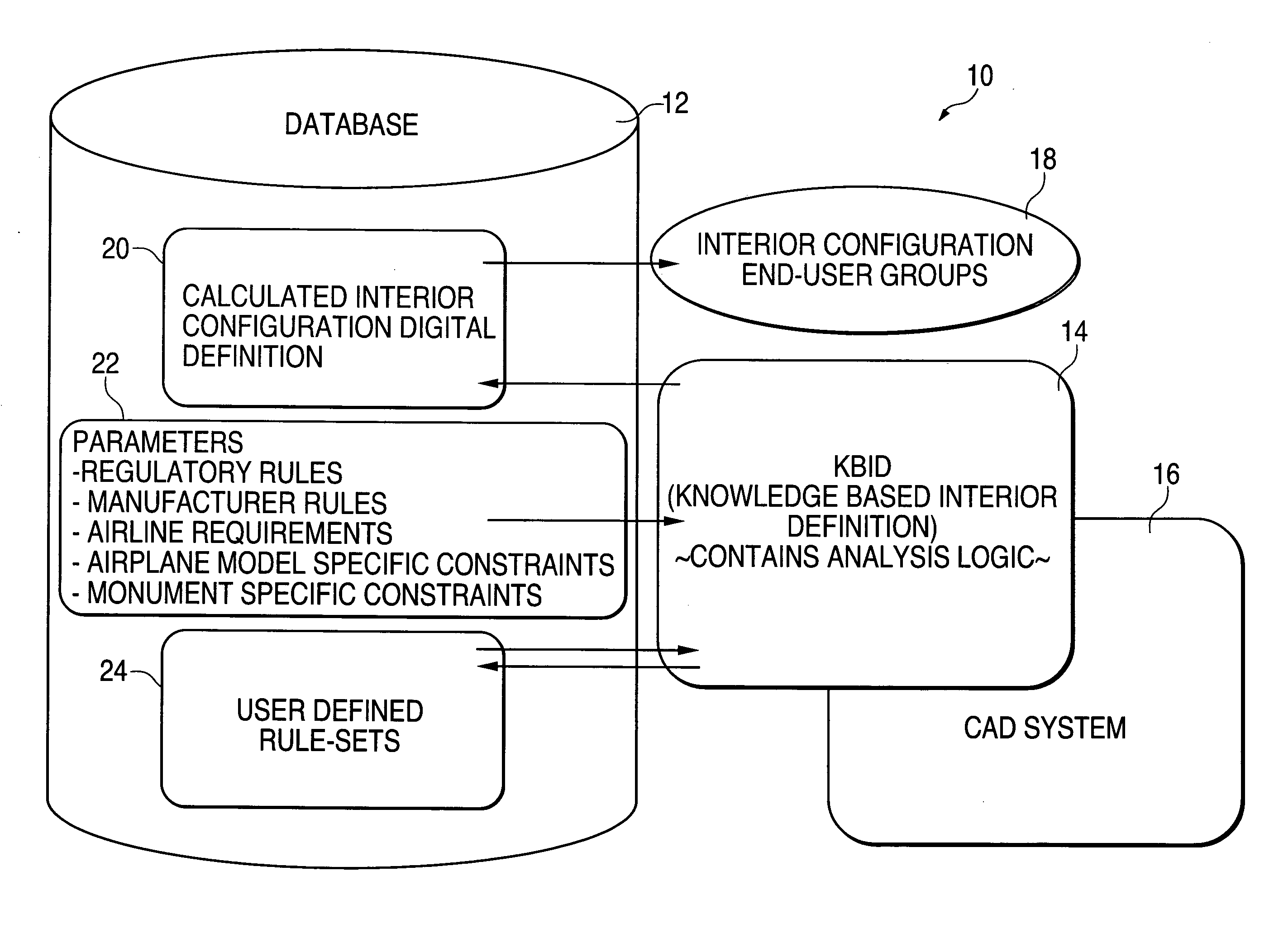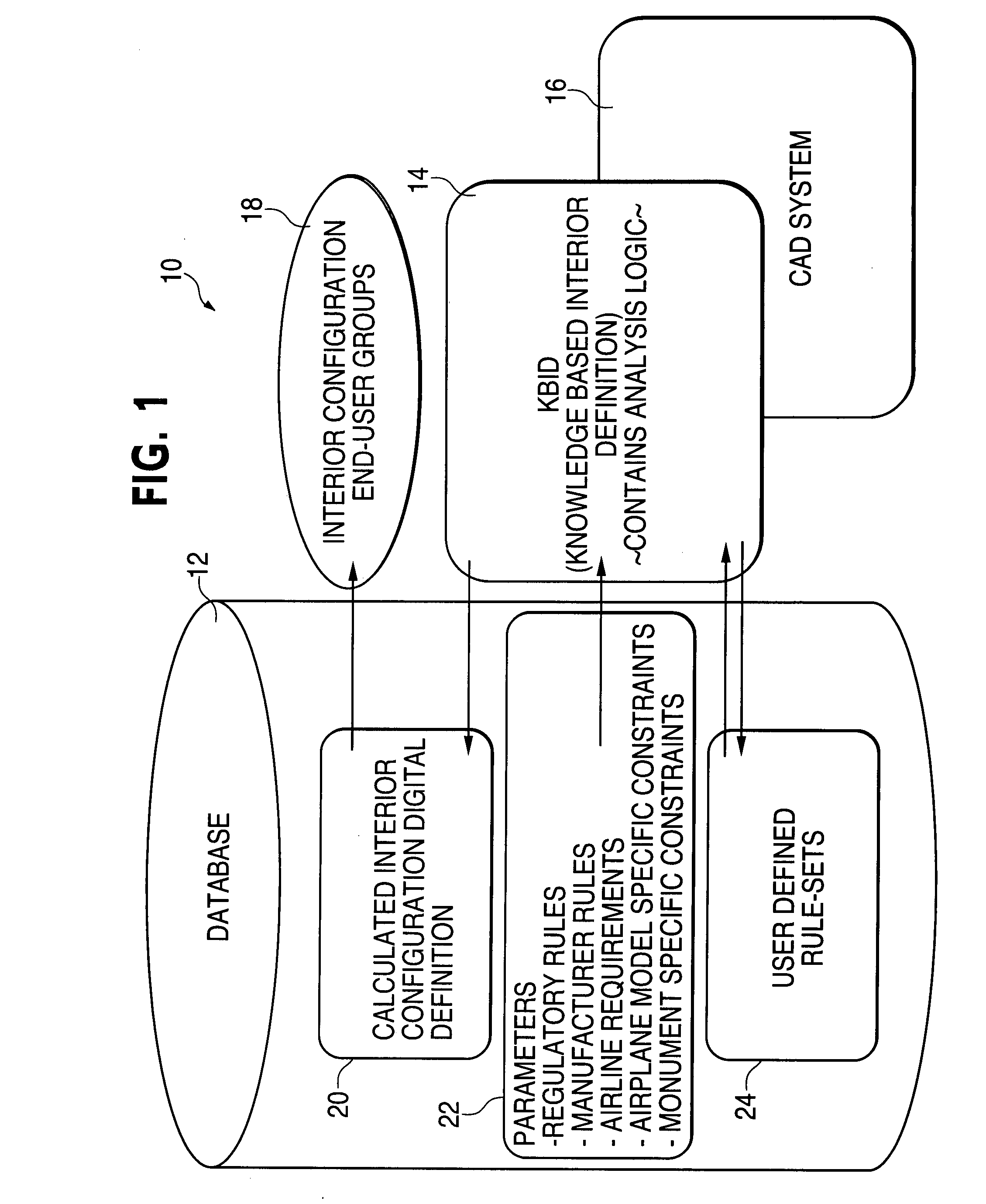Transforming airplane configuration requirements into intelligent spatial geometry
a technology of configurable space and configuration requirements, applied in the direction of aircraft crew accommodation, seating arrangements, instruments, etc., can solve the problems of inability to efficiently shift seats or other landmarks, the current interior configuration model does not automatically ensure optimal seat and landmark locations, and the manual process is difficult to keep pace with the rapid change in overall aircraft configuration
- Summary
- Abstract
- Description
- Claims
- Application Information
AI Technical Summary
Benefits of technology
Problems solved by technology
Method used
Image
Examples
Embodiment Construction
[0028] An embodiment in accordance with the present invention provides a Knowledge Based Interior Development tool, or an eConfig tool, that enhances and automates the process for developing interior configurations. The tool enables configurators to easily and efficiently generate the large number of interior configurations required in the product development, sales, and customer introductions environment. Additionally, the data generated by the application provides the foundation for sharing configuration data among downstream users. A full-time link to a database is established to retrieve the required input parameters and then the configuration geometry and arrangement is generated in the Computer Aided Design system by the Knowledge Based Interior Development tool. Finally, the selected rule-set is saved back to the database for future reference. Specific data, such as seat and commodity locations, may also be stored in a database for future use by downstream users.
[0029] The K...
PUM
 Login to View More
Login to View More Abstract
Description
Claims
Application Information
 Login to View More
Login to View More - R&D
- Intellectual Property
- Life Sciences
- Materials
- Tech Scout
- Unparalleled Data Quality
- Higher Quality Content
- 60% Fewer Hallucinations
Browse by: Latest US Patents, China's latest patents, Technical Efficacy Thesaurus, Application Domain, Technology Topic, Popular Technical Reports.
© 2025 PatSnap. All rights reserved.Legal|Privacy policy|Modern Slavery Act Transparency Statement|Sitemap|About US| Contact US: help@patsnap.com



